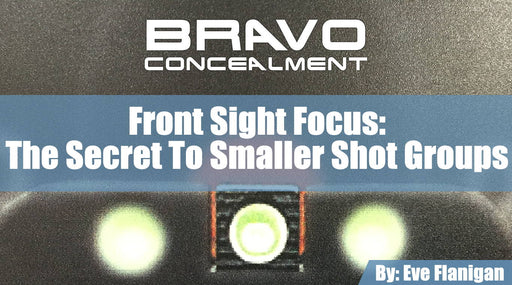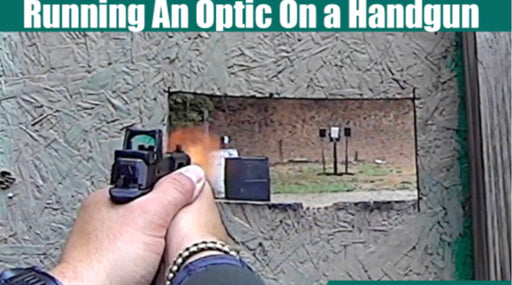
The average concealed carry consumer is more educated than ever. More people are choosing to participate in formal training or study online content regarding guns before taking the step of purchasing their first one. That’s a good thing! Still, myths about suitability of guns based on the size of the gun or the user persist.
Generally, the myth goes something like, “small people (sometimes generalized as “women”) need small guns.” At times, the converse belief is passed along, e.g. larger people (very often assumed as “men”) need big guns. Online forums and conversations, usually on the customer side of the gun store counter, provide plenty of examples of the size myth.
Like so many things, there are grains of truth about gun and hand size that have become oversimplified and, with time, evolved into patently useless myths. It’s understandable since many things are easier to comprehend and remember when distilled into black-and-white terms. But shooter/gun proportions are not a black-and-white equation. In an attempt to clear up this common and often bad advice about gun size, here goes.
What does gun size mean, anyway?
“Size” is a fluid concept where guns are concerned (if you were expecting a dirty joke by now, sorry to disappoint). For some, the word refers to cartridge size, usually with anything under .40 considered small. Never mind that a well-placed 22LR round can kill or maim. And the cartridge association often falls short when speaking of magazine capacity. Ever notice that the same size magazine carries a lot more 9mm than it does 40 S&W or 45 ACP?
So if size isn’t always caliber, maybe it’s weight. Weight has almost as much to do with material and cartridge size as the measured dimensions. Steel-frame guns weigh more than polymer-
Sight radius or barrel length is another reference commonly generalized as “size.” A quite short sight radius might be, for example, that of a Ruger LCR (that company’s logical name for lightweight, compact revolver) is 3.75 inches. The sight radius of another popular carry gun, the Sig Sauer P938, is a slight 4.2 inches. Compare that to Glock models 17 or 22, a widely-used gun that’s considered full size. They come in at 6.5 inches.

Then there other dimensions integral to the gun that may be considered large or small. The distance from the top of the backstrap to the trigger, magazine release, and slide lock can make or break the experience of handling a particular handgun. When all three are within reasonable reach and easily operated, the gun is generally considered pleasant to handle.
Learning gun size lingo is a lot like learning the English language: there are some rules that apply some of the time, and enough exceptions that it’s necessary to be well-read and simply memorize the exceptions if one is to be conversant in mixed company.
How Aspects of Gun Size Affect the Shooting Experience
Let’s take a look at how the factors named above usually translate into the experience of a specific gun.
Cartridge Size has a direct relationship to recoil, the rearward thrust that occurs upon discharge of a round. In two guns of equal dimensions and weight but different chamberings, the one that holds more powder yields more recoil.
So there’s the grain of truth: more powder = more recoil. And there’s the condition under which that happens: guns of nearly identical equal weight and dimensions or when the smaller-dimension/weight gun is also made for the larger caliber cartridge.
Side note: “Cartridge size” is used here because its synonym, “caliber,” indicates only diameter. Many calibers are identical, but cartridge length varies. For example .380 and 9mm are the same caliber, as are .38 and .357, not to mention the various renditions of .45.

Weight of the firearm is usually correlated positively with ease of shooting, to an extent. Heavier guns absorb more recoil than smaller ones, therefore less recoil reaches the shooter, making heavier guns “easier” to shoot. That’s not exactly intuitive information! A great example is any traditional steel-frame .38 Special revolver in the full-size rendition. While it may feel unwieldy in smaller hands, its recoil is rather tame, making this one of the great types to learn on. Compare that to lightweight, concealment-ready revolver like the Smith & Wesson Airweight or Ruger LCR, also in .38 Special. Recoil for these little revolvers is rather severe and is often painful for elderly operators or those with past hand/wrist injuries. Yet these are exactly the guns many people recommend for the smallest and oldest new shooters. How much practice would you log on your gun if you associated pain with range time?
Sight Radius is the distance between the rear and front sights. It is roughly equivalent to barrel length. The shorter the barrel or sight radius, the less forgiving small errors in sight alignment are. Not helping much is that many of the industry’s shortest barrels also have non-adjustable, molded-in sights that can be difficult to see clearly. Such guns aren’t made for serious shooting; they were made for up-close violence. Range practice is important with any carry gun, but it’s more difficult and fatiguing when dealing with molded-in or otherwise hard-to-see sights.
Dimensions make a big difference in whether a gun is enjoyable and a realistic candidate for its intended use. A trigger that cannot be reached easily will necessitate straying from an ideal grip. Skinny, flat guns, like many of the 380 ACP models, sometimes rely on utter finger strength and finer motor skills for tasks like slide-racking and engaging or releasing the slide lock. Arthritic or injured operators are sometimes stymied by such guns. By contrast, a magazine release or slide lock that are more distant to the hand can often become inconsequential when paired with competent instruction and practice. To determine if a gun is a good fit, first check to see that the magazine and chamber (or cylinder, for revolvers) are cleared of ammunition. Feel your way around and operate the controls including the slide lock (in most cases there is one), magazine release, and any decocking and/or safety mechanisms. Slam a magazine into the well and, if the gun is small, decide if you can deal with a dangling pinky while shooting and/or making a habit of loosening the pinky and ring finger while loading to avoid being pinched. Dry fire and decide if the trigger is reachable and if the trigger’s operation requires just the right degree of pressure—not too heavy; not too light, around five pounds of pressure, is a rule of thumb for defensive handguns. That suggestion is made is with the assumption that the operator consistently follows the rules of firearm safety. Keep in mind that perfect gun-to-hand matches are relatively uncommon, but good training supported by practice can overcome virtually any minor misfit.
I’ve lost count of the number of new shooters who told me they chose a gun based on how it felt in their hand when they handled it in the store. But they failed to do any of the above to truly understand if that gun really fits. Take this as advice to learn from what has, for some, turned out to be buyer’s remorse.
Compromise is an almost-unavoidable factor when choosing a gun for concealed carry. “Size” is often a point of compromise, but means different things to different people. If you didn’t know before, you’re now aware of how various aspects of size can affect the shooting experience, and that smaller is often not an indicator of easier operation. Enjoy shooting whatever you have, and if you don’t enjoy it, find something different!




















Leave a comment
1 comment
In Michigan we are pretty bundled up this time of year. What ammo do you recommend for self defense, I carry a Sig P365xl.